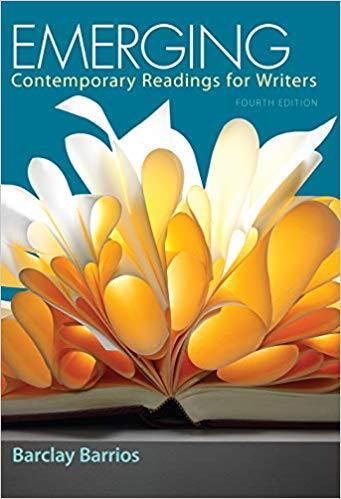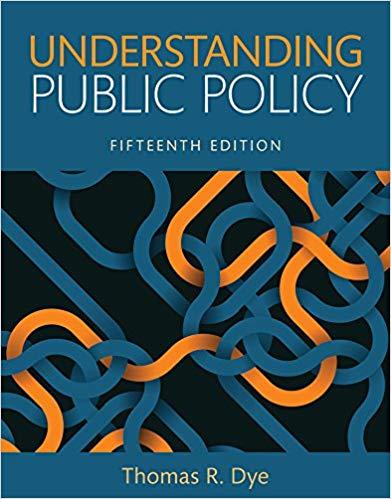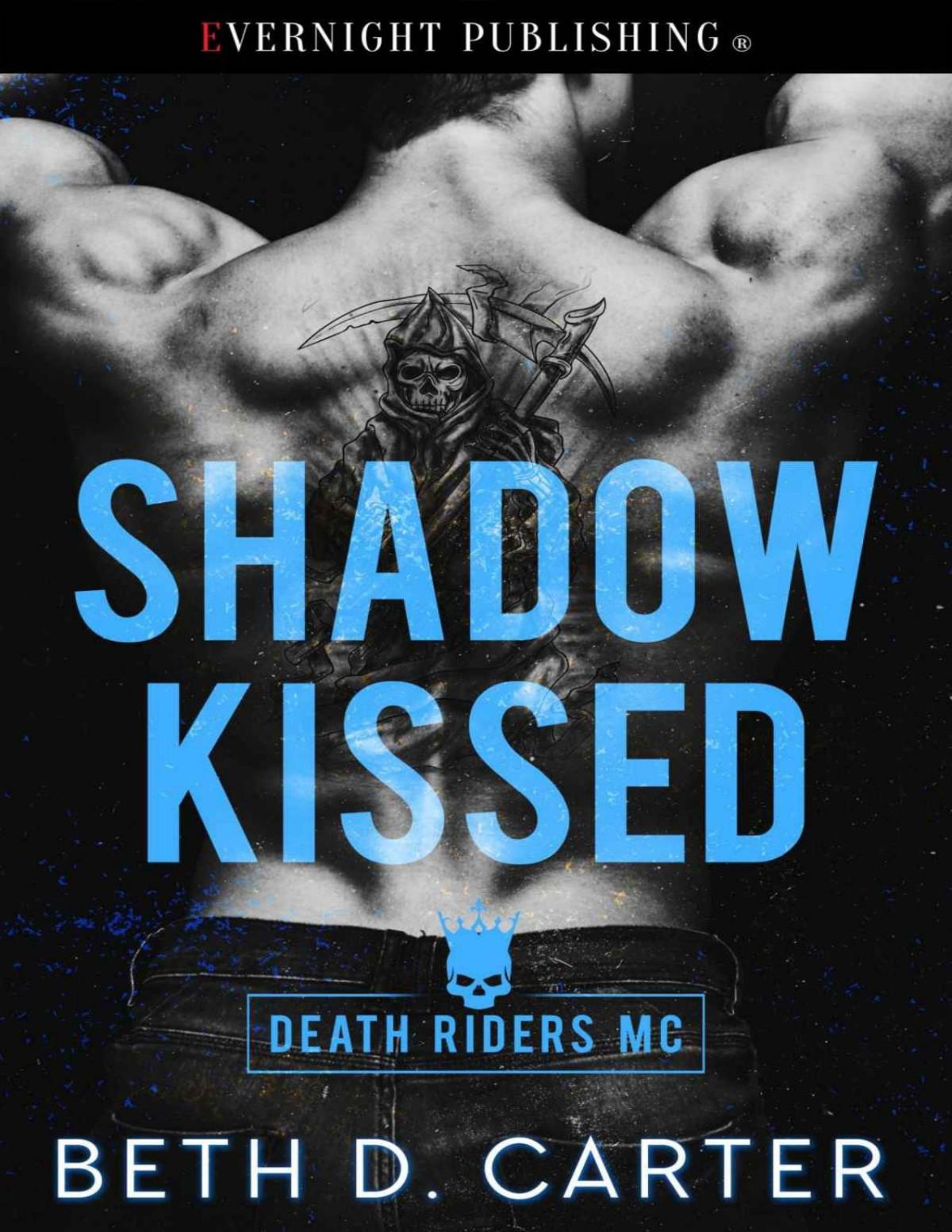https://ebookmass.com/product/ebook-pdf-readings-forwriters-15th-edition/
Instant digital products (PDF, ePub, MOBI) ready for you
Download now and discover formats that fit your needs...
(eBook PDF) Emerging: Contemporary Readings for Writers Fourth Edition
https://ebookmass.com/product/ebook-pdf-emerging-contemporaryreadings-for-writers-fourth-edition/
ebookmass.com
(eTextbook PDF) for Understanding Public Policy 15th Edition
https://ebookmass.com/product/etextbook-pdf-for-understanding-publicpolicy-15th-edition/
ebookmass.com
(eBook PDF) Making Literature Matter: An Anthology for Readers and Writers 7th Edition
https://ebookmass.com/product/ebook-pdf-making-literature-matter-ananthology-for-readers-and-writers-7th-edition/
ebookmass.com
Shadow Kissed Beth D. Carter
https://ebookmass.com/product/shadow-kissed-beth-d-carter/
ebookmass.com
Advice 77
• Tone: e Writer’s Voice in the Reader’s Mind / Mort Castle 77
Examples 82
• Salvation / Langston Hughes 82
• Parkinson’s Disease and the Dream Bear / Anthony C. Winkler 86
Real-Life Student Writing 90
• A ank-You Note to an Aunt 90
5 The Writer’s Thesis 91
Road Map to Thesis 91
Finding Your Thesis 91
Key Words in the Thesis 93
Characteristics of a Good Thesis 93
The Thesis Predicts 93
The Thesis Controls 94
The Thesis Obligates 95
Nine Errors to Avoid in Composing a Thesis 96
The Explicit versus the Implicit Thesis 98
Advice 101
• e esis / Sheridan Baker 101
Examples 104
• Remarks on the Life of Sacco and on His Own Life and Execution / Bartolomeo Vanzetti 104
• A Good Man Is Hard To Find / Flannery O’Connor 106
Real-Life Student Writing 120
• A Eulogy to a Friend Killed in a Car Wreck 120
6 Organizing Ideas 121
Road Map to Organizing 121
Organizing the Short Essay 121
Make a Jot List 121
Sketch out Your Paragraphs 122
Make a Flowchart 122
Organizing the Long Essay 123
Planning by Listing Supporting Materials 124
Organizing with a Formal Outline 125
Focus on a Dominant Impression 191
Use Images in Your Descriptions 192
Appeal to All of Your Reader’s Senses 193
Warming Up to Write a Description 193
Examples 194
• e Libido for the Ugly / H. L. Mencken 194
• Hell / James Joyce 199
Image Gallery for Critical Thinking and Debate: Self-Image 203
Punctuation Workshop: The Comma (,) 208
Student Corner 209
• Body Modi cation: ink about It! / Shelley Taylor 209
• How I Write 214
• My Writing Tips 214
To the Point 214
Chapter Writing Assignments 215
Writing Assignments for a Specific Audience 215
Pointer from a Pro: Write about the Familiar 215
10
Process Analysis 216
Road Map to Process Analysis 216
What Process Analysis Does 216
When to Use Process Analysis 217
How to Write a Process Analysis 217
State Your Purpose in a Clear Thesis 217
Organize the Sequence of Steps Logically 217
Explain Everything 218
Warming Up to Write a Process Analysis 218
Examples 219
• My Strangled Speech / Dan Slater 219
• Hunting Octopus in the Gilbert Islands / Sir Arthur Grimble 225
Image Gallery for Critical Thinking and Debate: Bullying 229
Punctuation Workshop: The Semicolon (;) 234
Student Corner 235
• Bullied / Gunnar Neuman 235
11
• How I Write 237
• My Writing Tip 238
To the Point 238
Chapter Writing Assignments 238
Writing Assignments for a Speci c Audience 238
Pointer from a Pro: Be Sincere 239
Illustration/Exemplification 240
Road Map to Illustration/Exemplification 240
What Illustration/Exemplification Does 240
When to Use Illustration 241
How to Use Illustration 242
Warming Up to Write an Illustration 244
Examples 245
• e Myth of the Latin Woman: I Just Met a Girl Named Maria / Judith Ortiz Cofer 245
• “Mirror, Mirror, on the Wall . . .” / John Leo 251
Image Gallery for Critical Thinking and Debate: Drugs and Society 254
Punctuation Workshop: The Dash (—) 259
Student Corner 260
• Solving the Drug Problem in the United States / Jordan Dubini 260
• How I Write 262
• My Writing Tip 262
To the Point 262
Chapter Writing Assignments 262
Writing Assignments for a Specific Audience 263
Pointer from a Pro: Be Clear 263
12 Definition 264
Road Map to Definition 264
What Definition Does 264
When to Use Definition 264
How to Use Definition 265
Warming Up to Write a Definition 267
16
Examples 342
• A Peaceful Woman Explains Why She Carries a Gun / Linda M. Hasselstrom 342
• Bricklayer’s Boy / Alfred Lubrano 347
Image Gallery for Critical Thinking and Debate: The Status of Women 353
Punctuation Workshop: The Exclamation Point (!) 359
Student Corner 360
• “Woman” Is a Noun / Paula Rewa 360
• How I Write 362
• My Writing Tip 362
To the Point 362
Chapter Writing Assignments 363
Writing Assignments for a Specific Audience 363
Pointer from a Pro: Scrap Adverbs and Adjectives 363
Argumentation and Persuasion 364
Road Map to Argumentation and Persuasion 364 What Argumentation and Persuasion Do 364
When to Use Argumentation and Persuasion 364
How to Use Argumentation and Persuasion 365
Warming Up to Write an Argument 370
Examples 371
• Why Don’t We Complain? / William F. Buckley, Jr. 371
• A Modest Proposal / Jonathan Swift 377
Image Gallery for Critical Thinking and Debate: Homelessness 384
Punctuation Workshop: Quotation Marks (“”) 389
Student Corner 390
• People Out on a Limb / Antoinette Poodt 390
• How I Write 392
• My Writing Tip 393
To the Point 393
Chapter Writing Assignments 393
Term Paper Suggestions 393
Writing Assignments for a Specific Audience 394
Pointer from a Pro: Read Well, Write Well 394
17 Combining the Modes 395
Road Map to the Modes 395
What Combining the Modes Does 395
When to Combine the Modes 396
How to Use Combined Modes 396
Examples 398
• Shrew— e Littlest Mammal / Alan DeVoe 398
• Once More to the Lake / E. B. White 402
Image Gallery for Critical Thinking and Debate: The New Technology 408
Punctuation Workshop: Using Other Punctuation with Quotation Marks 414
Student Corner 415
• oughts about the Internet / Charlie Sorensen
• How I Write 416
• My Writing Tip 417
To the Point 417
Chapter Writing Assignments 417
Writing Assignments for a Specific Audience 417
Pointer from a Pro: Avoid Noun Clusters (NOUN+NOUN+NOUN) 418
PAR T T HREE
Rewriting Your Writing 419
The Editing Booth 419
Revising 420
The Exploitation of Endangered Wildlife 422
Editing 423
Rule 1: Make Your Title Descriptive 423
Rule 2: Begin with a Simple Sentence 423
Rule 3: Prune Deadwood 424
Rule 4: Do Not Overexplain 427
Rule 5: Be Specific 427
Rule 6: Avoid Trite Expressions 428
Rule 7: Use the Active Voice 428
Man against Darkness, W. T. Stace (paragraph) 158
Hell, James Joyce (book excerpt) 199
● Portrait of the Individual
Remarks on the Life of Sacco and on His Own Life and Execution, Bartolomeo Vanzetti (notes from a speech) 104
My Name Is Margaret, Maya Angelou (autobiography) 171
My Strangled Speech, Dan Slater 219
Hunting Octopus in the Gilbert Islands, Sir Arthur Grimble (autobiography) 225
Grant and Lee: A Study in Contrasts, Bruce Catton (essay) 300
A Peaceful Woman Explains Why She Carries a Gun, Linda M. Hasselstrom (essay) 342
Bricklayer’s Boy, Alfred Lubrano (essay) 347
Once More to the Lake, E. B. White (essay) 402
● Science
Entropy, K. C. Cole 269
Shrew—The Littlest Mammal, Alan Devoe (essay) 398
Development of a Scale to Detect Sexual Harassers: The Potential Harasser Scale (PHS), Leanne M. Masden and Rebecca B. Winkler (APA-style student research paper) 475
● Social Problems
I Have a Dream, Martin Luther King, Jr. (speech) 40
Letter to Horace Greeley, Abraham Lincoln (essay) 45
The Death of Horatio Alger, Paul Krugman 62
Terrorism: America in Fear (student essay), Jeffrey Metherell 186
The Libido for the Ugly, H. L. Mencken (essay) 194
Immigrants in America, Dave Herman (student essay) 284
“OMGILY2!!” Online Dating Is at Your Own Risk (student essay), Kindra M. Neuman 310
Color of Their Skin AND Content of Their Character (student essay), Carrie Moore 333
A Modest Proposal, Jonathan Swift (essay) 377
People Out on a Limb, Antoinette Poodt (student essay) 390
● Thinking
Thoughts about the Internet (student essay), Charlie Sorensen 415
Issues for Critical Thinking and Debate
In Print and Online in MindTap for Readings for Writers 15th Edition
Readings, images, and videos in blue are accompanied by questions.
The American Dream (Chapter 3) in print and mindtap
• e Death of Horatio Alger / Paul Krugman
• By Our Own Bootstraps / W. Michael Cox and Richard Alm
• Long Live the American Dream / Shikha Dalmia only in mindtap
• Deer Hunting with Jesus: Dispatches from America’s Class War / Jack Estes
• Farewell, Bu alo / Julia Burke
• Crumbling American Dreams / Robert D. Putnam
• e American Dream / Martin C. Jischke
• e American Dream / Richard Todd
• Niall Ferguson on the End of the American Dream / Niall Ferguson
Terrorism (Chapter 8) in print and mindtap
• Terrorism: America in Fear / Je rey Metherell (Student Corner essay)
• Image Gallery only in mindtap
• My Accidental Jihad / Krista Bremer
• e Real War / omas L. Friedman
• Violence in the Name of Allah? (video)
• How America Made ISIS / Tom Engelhardt
• American Extremist Reveals His Quest to Join ISIS / Richard Engel, James Novogrod and Michele Neubert
xix
The Status of Women (Chapter 15)
in print and mindtap
• “Woman” Is a Noun / Paula Rewa (Student Corner essay)
• Image Gallery only in mindtap
• e New Feminism / Kate Gubata
• e Farce of Feminism / Rebecca E. Rubins
• Hillary and Her Campaign for Women (video)
• e Gender Wage Gap Lie / Hanna Rosin
Homelessness (Chapter
16)
in print and mindtap
• People Out on a Limb / Antoinette Poodt (Student Corner essay)
• Image Gallery only in mindtap
• Homeless / Anna Quindlen
• e Homeless Lack a Political Voice, But Not American Ideals / Matt Lynch
• Good Night Moon Project (website)
• Citizen Crusaders for the Homeless (video)
• Rethink Homelessness Campaign / Impacthomelessness.org (video)
The
New Technology (Chapter 17)
IN PRINT AND MINDTAP
• oughts about the Internet / Charlie Sorensen (Student Corner essay)
• Image Gallery ONLY IN MINDTAP
• No Technology? No Problem / Eric Brende
• Beware the Apps! / Lacreta Scott
• Digital Detox (video)
• Too Much Technology Is Bad for the Brain / Steve Nelson
• e Problem with Easy Technology / Tim Wu
Preface
Do textbooks have a tendency to gain weight as they age? This might seem a preposterous question to ask about an inanimate object made of cellulose, cardboard, paper, and glue. But Readings for Writers is a spectacularly different book from others like it, having sold over a million copies and been used by hundreds of thousands of students as their basic freshman composition reader. Chances are good that it was your English teacher’s first composition reader many years ago. It is also an incontrovertible fact that over the years it has grown bigger and fatter. It made its debut as a freshman composition text in 1974 at a girth of 530 pages. Now on the verge of its fifteenth edition, it weighs in at a colossal 820 pages—a gain of 290 pages. The time had come, we decided, to put the porker on a strict diet. There are practical reasons for doing so. An inescapable fact about textbooks is they have a distressing tendency to not only get fatter with age but to get more expensive with every added page.
Over the years, Readings for Writers has kept pace with the themes, times and technology, some of which have perished and disappeared. For example, we have bounded from slow research in library carrels to instant research on the Internet. Although many of the issues we debated decades ago remain unresolved, we have moved on to more current topics such as terrorism and online dating. Nonetheless, we continue to teach writing as a skill that combines clarity and precision. Best of all, we immerse students in a mixture of classical masterpieces as well as progressive prize winners, which we encourage them to use as intellectual models. Moreover, realizing that indeed “one picture is worth a thousand words,” we have taken the Art Gallery and distributed its images throughout the Part 2 chapters.
Readings for Writers provides a taste of all kinds of brilliant writing—literary classics, poems, speeches, narratives, and philosophy. Here William Shakespeare and Abraham Lincoln mingle with Martin Luther King and Maya Angelou. The aristocrat Sir Arthur Grimble mixes with common laborer Rick Bragg. We respect and challenge each one of them. All of the anthologized material is brought together and ordered under the headings of either advice or examples, giving students, as well as instructors, an idea of the practical emphasis of each selection. It is this unique structure, range of readings, and multifaceted appeal to every conceivable taste that have endowed Readings for Writers with its remarkable longevity.
New to This Edition—Online and in Print
The most significant change in this fifteenth edition is that the book is now online as well as in print.
• Quirky little prompts send students to the popular Editing Booth with its checklist of fundamental rules for editing.
• Each anthologized piece is still followed by questions about the Facts, Strategies, and Issues explored, and is bolstered by suggestions for writing.
• Each chapter still ends with Chapter Writing Assignments and Writing Assignments for a Specific Audience.
All of the changes in this fifteenth edition have one unmistakable aim: to make Readings for Writers even easier and more practical to use than before. Combining the advice of its anthologized experts with the authors’ commentary, Readings for Writers can still be used unaccompanied by any other book.
Ancillaries
• The Heinle Original Film Series in Literature DVD—This DVD includes three short films. The first film, Eudora Welty’s A Worn Path, includes an interview with Eudora Welty conducted by Pulitzer Prize–winning playwright Beth Henley. The second film, John Updike’s A&P, includes an interview with John Updike conducted by Pulitzer Prize–winning writer Donald Murray. The final film, Raymond Carver’s Cathedral, includes an interview with Raymond Carver’s widow, Tess Gallagher, conducted by Carver scholars William Stull and Maureen P. Carroll.
• Online Instructor’s Manual—Explore different literary interpretations and prepare for class more quickly and effectively with our online instructor’s manual, which provides possible answers to the questions posed at the end of the readings and the Image Gallery images.
• Resources for Writers—Resources for Writers offers a variety of online activities for students to practice and refine their understanding of key concepts via interactive grammar and proofreading exercises, anti-plagiarism tutorials, writing and research modules, multimedia activities, and downloadable grammar podcasts.
• “Salvation” by Langston Hughes (DVD): The Wadsworth Original Film Series in Literature—Based on a chapter from Langston Hughes’s autobiography, The Big Sea, Salvation stars Lou Beatty, Jr., and Ella Joyce. The video also includes interviews with Alice Walker and Arnold Rampersad, the foremost authority on Langston Hughes.
• Fast Track to a 5: Preparing for the AP® English Language and Composition Examination—This test-preparation guide includes an introduction on taking the exam, a vocabulary of literary terms, detailed preparation guidelines for each type of question found on the exam, and two complete practice exams. Written by Steve Olsen and Eveline Bailey, both of La Porte High School, La Porte, Texas.
Please contact your National Geographic/Cengage sales representative for more information, to evaluate examination copies of any of these teacher or student resources, or for product demonstrations.
The
Journey Ahead
Learning to write well is comparable to taking a journey. Students travel from topic to topic— picking up tips and techniques as they go, meeting new writers whose art they can study and perhaps try to imitate. If there were a metaphorical equivalent for this book, it would be a field trip, where students learn by observing and by practicing what they have learned. Along the way, we send students to some editing workshops and guide their steps along various road signs, indicating the directions they are to follow. Think of this book, then, not merely as a text with the usual implications of dryness that the word suggests, but as a road map that will rush students off to far-flung destinations and then take them back to their own backyards as better writers than when they began.
Acknowledgments
A textbook is always a collaborative work. Many people—including editors, proofreaders, fact checkers, and various supporting personnel—contribute their skills and insights into making a book of this sort what it finally becomes. We thank them all for sharing their minds and talents with us and for making themselves available to us any time we needed them. Specifically, we would like to thank our editor, Karen Mauk, for encouraging us to keep to our time line and for her careful attention to detail, which often included helping us find material we needed and keeping us organized. We also wish to thank the following strong advisors at Cengage Learning: Kate Derrick, Product Manager; Leslie Taggart, Senior Content Developer; Dan Saaybe, Content Project Manager; Stacey Purviance, Marketing Director; Erin Parkins, Marketing Manager; Kathleen Walsh, Product Assistant; and Rachel Smith, Assistant Content Developer.
We would like to also gratefully acknowledge those reviewers who helped shape this fifteenth edition:
Belinda Adams, Navarro College
John Bennett, Lake Land College
Patricia Cain, Pasadena Memorial High School
Anthony Cavaluzzi, SUNY Adirondack
Susan Dawson, University of Louisville
Erwin Ford, Albany State University
Jane Gamber, Hutchinson Community College
Pat Herb, North Central State College
Terri Hilgendorf, Lewis and Clark Community College
Amelia Keel, Lone Star College — Kingwood
Howard Kerner, Polk State College
Laura La Flair, Belmont Abbey College
Christine Long, Bellbrook High School
Julie Long, College of the Albemarle
Alexis Moore, Xavier University of Louisiana







